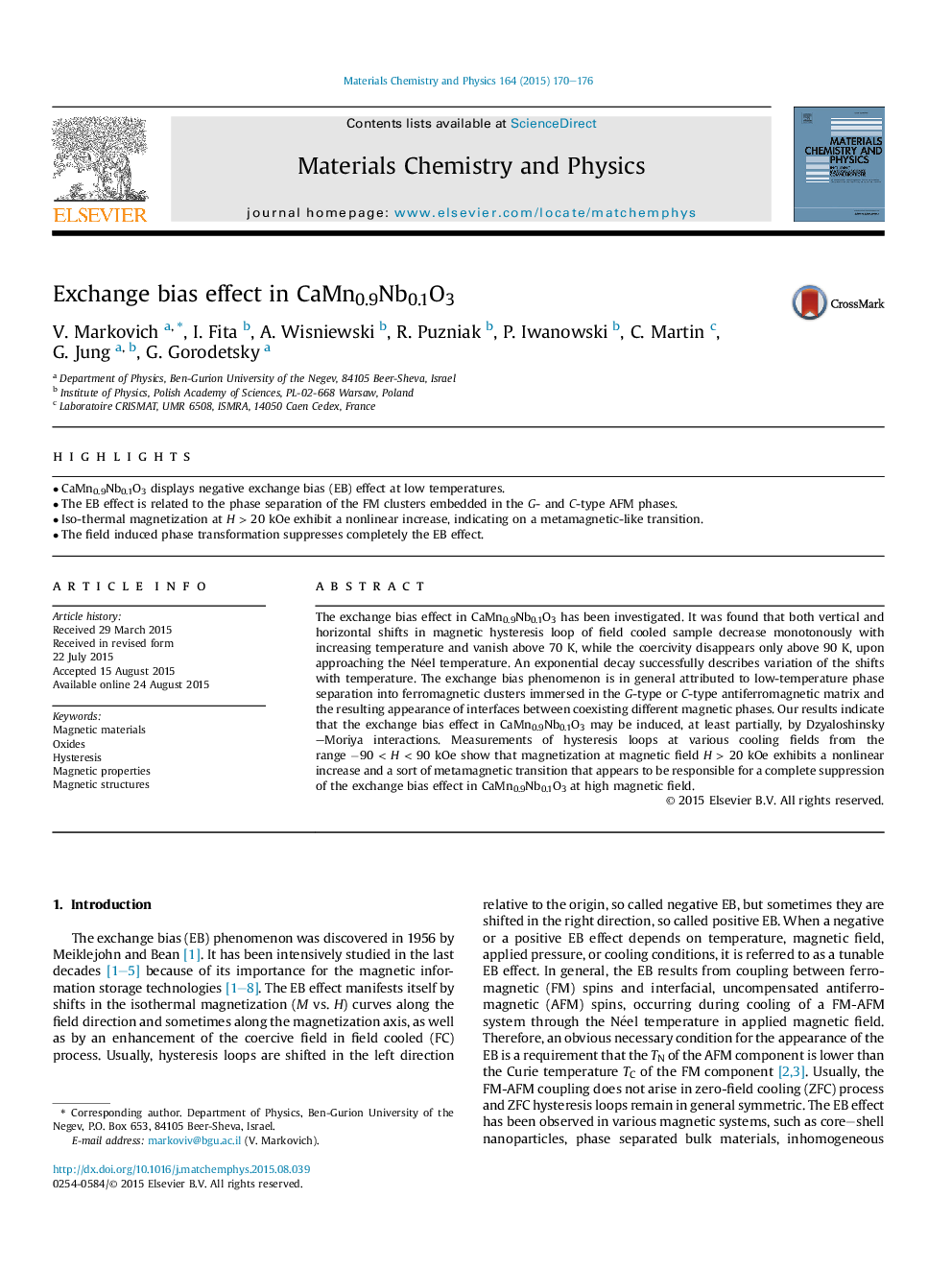| Article ID | Journal | Published Year | Pages | File Type |
|---|---|---|---|---|
| 1521219 | Materials Chemistry and Physics | 2015 | 7 Pages |
•CaMn0.9Nb0.1O3 displays negative exchange bias (EB) effect at low temperatures.•The EB effect is related to the phase separation of the FM clusters embedded in the G- and C-type AFM phases.•Iso-thermal magnetization at H > 20 kOe exhibit a nonlinear increase, indicating on a metamagnetic-like transition.•The field induced phase transformation suppresses completely the EB effect.
The exchange bias effect in CaMn0.9Nb0.1O3 has been investigated. It was found that both vertical and horizontal shifts in magnetic hysteresis loop of field cooled sample decrease monotonously with increasing temperature and vanish above 70 K, while the coercivity disappears only above 90 K, upon approaching the Néel temperature. An exponential decay successfully describes variation of the shifts with temperature. The exchange bias phenomenon is in general attributed to low-temperature phase separation into ferromagnetic clusters immersed in the G-type or C-type antiferromagnetic matrix and the resulting appearance of interfaces between coexisting different magnetic phases. Our results indicate that the exchange bias effect in CaMn0.9Nb0.1O3 may be induced, at least partially, by Dzyaloshinsky–Moriya interactions. Measurements of hysteresis loops at various cooling fields from the range −90 < H < 90 kOe show that magnetization at magnetic field H > 20 kOe exhibits a nonlinear increase and a sort of metamagnetic transition that appears to be responsible for a complete suppression of the exchange bias effect in CaMn0.9Nb0.1O3 at high magnetic field.
